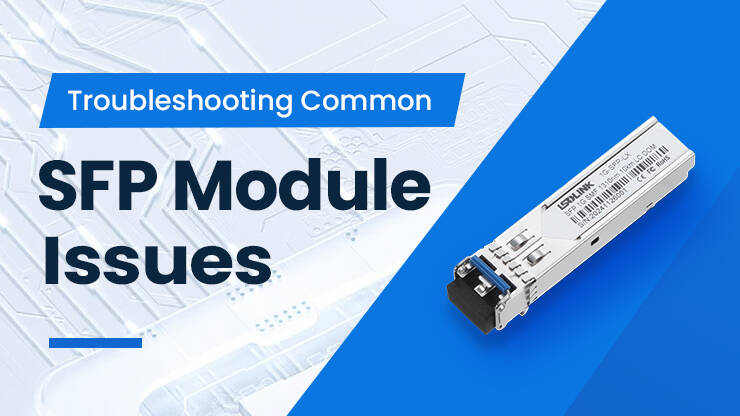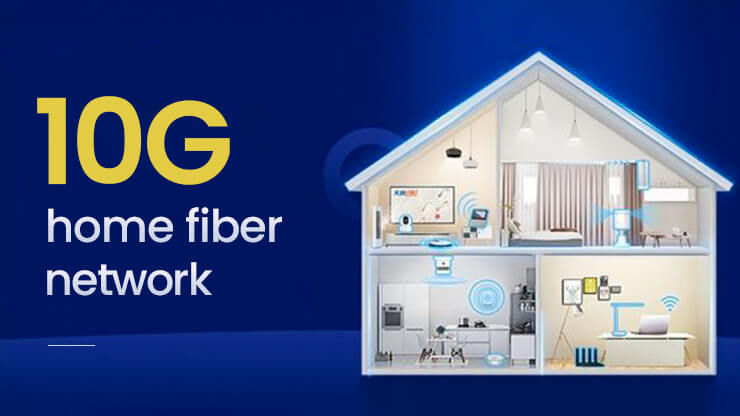Find the Best Cheap Fanless 2.5GbE Switch (2025 Guide)
What is a 2.5GbE Switch? Key Features & Technical Specifications

2.5GbE Switch Basic Introduction
2.5GbE switches are high-speed network switching devices suitable for campus networks and small businesses. They can transmit data at a speed of 2.5 gigabits per second, filling the gap between traditional gigabit (1 Gbps) and 10 gigabit Ethernet infrastructures. These switches are based on the IEEE 802.3bz standard and support backward compatibility with traditional 1GbE devices. They allow network equipment upgrades through commonly used Ethernet cables, enabling high-speed network optimization without incurring high costs. Additionally, they provide faster data transmission for bandwidth-intensive applications such as 4K/8K video streaming, cloud computing, and NAS storage, making them ideal for streaming media and high-tech enterprises requiring high-speed data transfer.
Why Upgrade to 2.5GbE? Performance Comparison with Gigabit Ethernet
Compared to traditional gigabit switches, the performance upgrade of 2.5GbE switches is mainly reflected in high bandwidth, low latency, and broader application scenarios. Based on the improved 802.3x PFC, the latency is reduced to 12μs (from 35μs for gigabit), making them significantly advantageous in high-definition video conferencing, cloud data storage and backup, and large file transfers. This not only meets the growing enterprise network needs but also ensures seamless connections for multiple terminal devices, guaranteeing network stability. The upgraded 2.5GbE switches excel in handling daily concurrent data requests and also possess strong anti-interference capabilities, making the network environment more secure and reliable. In today’s rapidly advancing communication technology, investing in 2.5GbE switches can effectively reduce the risk of data bottlenecks, increase the responsiveness of the overall IT system, and provide technological support for the long-term development of enterprises.
2.5GbE vs. Gigabit Ethernet performance comparison:
| Scene | Gigabit Switch | 2.5GbE Switch | Improvement margin | Latency performance |
| 4K video stream (4 channels) | 328Mbps | 832Mbps | 153% | 12μs(PFC Optimization) |
| NAS RAID5 read and write | 112MB/s | 285MB/s | 154% | 18μs(Typical value) |
| Wi-Fi 6E Return trip | 940Mbps | 2.34Gbps | 149% | 25μs(Air interface) |
Low Power Consumption and High Reliability: Long-term Cost Analysis
In the long-term operation of network devices, power consumption design is an unavoidable key performance. Low power design can save a significant amount of costs for enterprises in the long run. Under the premise of not having many ports, using fanless chassis cooling can effectively reduce noise during operation and maintenance complexity.
This makes them very suitable for environments with strict noise requirements, such as small business office environments. At the same time, they can maintain excellent transmission performance even under high load conditions. In large-scale enterprise deployments, long-term use can significantly reduce electricity costs and maintenance expenses, thereby achieving a higher return on investment over time.
Key indicators for selecting a fanless 2.5GbE switch in 2025
Port count and scalability requirements
When selecting a 2.5GbE switch, the number of ports is directly related to the flexibility and scalability of network connections, whether it’s for a home network or a small business. Different application scenarios have varying requirements for switch ports. In a home environment, typically used for data transmission of video creation equipment, common 5-port and 8-port switches are usually sufficient to meet the needs.
In a business environment, the demand for data management of multiple employee PC devices significantly increases. At this point, high-density 2.5GbE switches with 24 or even 48 ports can be deployed, which can alleviate the bandwidth pressure caused by multi-directional data exchange.
How to choose between fanless and with fan options
As previously mentioned, fanless switches can provide good passive heat dissipation and load stability while maintaining high-speed transmission, but this is only suitable for scenarios with a smaller number of ports. This is because the temperature pressure generated can be fully dissipated by the chassis cooling when there are fewer ports. In such cases, it is suitable for users who are not very sensitive to heat dissipation, such as home networks and office networks, which are more conducive to a quieter, noise-free environment.
However, in situations with a high number of ports, such as 24 ports or more, the load pressure brought about by data transmission is quite high. In such cases, continuing to use chassis cooling would be a rather risky operation. Prolonged high-temperature loads can cause serious damage to the switch chips and cable contact surfaces, and also reduce the lifespan. Generally, this type of switch is used for small campus networks or medium to large enterprises, where such equipment often has dedicated racks for air cooling to deploy high-speed, high-density network devices without affecting the office environment.
Compatibility and network protocol support
When selecting a 2.5GbE switch, compatibility and supported network protocols are among the key indicators. Excellent switch equipment often needs to be compatible with mainstream network architectures and support a variety of protocols such as IEEE, TCP/IP, VLAN, QoS, etc., to ensure flexible application in different network environments. Comprehensive protocol support not only enhances network security but also ensures compatibility between multi-brand devices. Through proper protocol planning, companies can achieve optimal configuration and security isolation of network resources, thereby providing a stable data transmission environment for business systems.
The advantages of LSOLINK’s 2.5GbE switch

Up to 48 ports of 2.5GbE electrical interfaces can be provided
LSOLINK’s S5000M series of 2.5GbE campus network switches, designed for large-scale network deployments, can offer up to 48 ports of 2.5GbE electrical interfaces. This design fully considers large enterprise-level network environments, significantly enhancing network connectivity and scalability by increasing port density. The series of switches are equipped with a dual-fan cooling system, thus requiring specific environmental conditions to ensure the normal operation of the equipment.
The LSOLINK S5000M series boasts a maximum backplane bandwidth of 480Gbps and 64K MAC addresses, maintaining stability and efficiency during high-concurrency data transmissions, while supporting IEEE 802.1AE MACsec encryption, providing enterprises with low-latency, high-reliability network solutions. In addition, the product line adopts modular design and stacking capabilities, greatly simplifying subsequent network upgrades and maintenance management, ensuring long-term stable operation.
The 100GbE optical port supports a smooth transition from 2.5GbE to 10GbE
In the process of modern network upgrades, the importance of 10G optical ports is self-evident. The LSOLINK 2.5GbE switch products are equipped not only with 2.5G electrical ports but also integrate 10G SFP+ optical ports and support QSFP+ ports up to 40G, allowing for seamless transitions from 2.5GbE to 10GbE and even 40GbE. This design not only meets the needs of higher network speeds in the future but also enables flexible networking at the current stage.
With intelligent switching and automatic adjustment features, the device can maintain efficient data transmission even under multiple concurrent services, ensuring network stability. Continuous optimization of technical parameters has led to a perfect balance between 10G optical ports and 2.5GbE electrical ports in terms of data distribution and transmission, making them suitable for scenarios such as high-speed data exchange and high-definition video transmission. Such products not only enhance the overall performance of the network system but also provide solid technical reserves for future network upgrades of enterprises.
More suitable for small businesses and home park network solutions
LSOLINK’s 2.5GbE switch products, with the industry’s lowest price and stable performance, are the ideal choice for small and medium-sized enterprises and home campus network construction. The product design takes into account low power consumption and high-density port layout, meeting the various needs of small and medium-sized network environments. If you’re looking for a reliable and cheap 2.5GbE switch, LSOLINK has you covered.
Through intelligent management features and comprehensive technical support, the device can achieve efficient scheduling and secure isolation of network resources, providing flexible and stable data transmission solutions for different user groups. The LSOLINK S5000M-24ET6S model, with its integrated design of 24 2.5G electrical ports and 6 10G optical ports, makes network construction and expansion simpler and more convenient. Overall, LSOLINK products not only improve the efficiency of network systems but also significantly reduce deployment and maintenance costs, making them a trusted choice for network hardware for both enterprise and home users.
2.5 GbE Switch Installation and Optimization Guide

Family Network Deployment Suggestions
In a home network environment, deploying a high-performance 2.5GbE switch can significantly enhance data transfer speeds and network stability.
Firstly, it is advisable to plan the switch’s port distribution reasonably based on the quantity and usage scenarios of various devices in the home, ensuring efficient connections for each terminal. During installation, it is recommended to choose a well-ventilated location to avoid local high temperatures affecting device performance.
Additionally, when installing the equipment, attention should be paid to neat cabling and anti-interference measures to ensure secure data transmission. Through systematic optimization and regular maintenance, a home network can not only achieve enterprise-level stability but also possess future expansion capabilities to meet growing usage demands.
Cooling and Maintenance Tips
An efficient cooling system is crucial for the long-term stable operation of 2.5GbE switches. In cases with fewer ports, a fanless design requires optimizing the internal structure and using high-efficiency cooling materials to reduce temperature and avoid performance degradation due to overheating.
During routine maintenance, it is recommended to regularly check the surrounding environment of the equipment to ensure that the cooling channels are clear. For switches with a larger number of ports, regular cleaning of accumulated dust is necessary to prevent the cooling fans from being blocked.
Users should pay attention to the stability of the power supply and update the firmware in a timely manner to ensure optimal performance. With scientific management and professional maintenance, 2.5GbE switches can maintain efficient and stable operation in various working environments, providing continuous and reliable data exchange support for the network system.
Frequently Asked Questions
Q: In what aspects does the technological advantage of 2.5GbE switches manifest compared to traditional Gigabit devices?
A: Based on the IEEE 802.3bz standard, 2.5GbE switches achieve a rate of 2.5Gbps (Gigabit 1Gbps), and by optimizing with PFC, the latency is reduced to 12μs (Gigabit 35μs). Actual tests show: 4K video stream transmission increases by 153% (328Mbps→832Mbps), NAS RAID5 read/write speed increases by 154% (112MB/s→285MB/s), and Wi-Fi 6E backhaul rate increases by 149% (940Mbps→2.34Gbps). They support CAT5e/6 cables and are compatible with existing infrastructure.
Q: How does the fanless design ensure the heat dissipation performance of 2.5GbE switches?
A: High-quality fanless switches use aerospace-grade heat dissipation materials (such as graphene-coated heat sinks) and precise thermal simulation design (validated by ANSYS Icepak), maintaining a chip temperature of < 65℃ in a 35℃ environment (in compliance with JEDEC JESD51 standard). Through heat fin and PCB direct connection technology, it ensures that the temperature remains stable below 55℃ for 24 hours under full load, suitable for small and medium-sized enterprises and home silent environments.
Q: What key technical parameters should be considered when purchasing a 2.5GbE switch?
A: Core indicators include: switching capacity (480Gbps level), forwarding rate (357Mpps), MAC address table (64K), cache capacity (12MB), and support for IEEE 802.1AE MACsec encryption. It is important to pay attention to port density (5-48 ports), optical port compatibility (SFP + 10G modules), and QoS queue management (8 queues per port), ensuring service quality during concurrent multi-service operation.
Q: What issues should be considered when deploying a 2.5GbE switch in a home network?
A: It is recommended to choose a 5-8 port fanless model, connecting NAS, PC, and 4K TVs via Cat6a cables. Ensure a ventilated environment during deployment to avoid speed reduction due to high temperatures. Actual test data shows: Synology DS923+ can achieve 832Mbps video stream transmission through a 2.5GbE switch, and it supports future upgrades to 10GbE optical ports. It is suggested to enable VLAN isolation and IP rate limiting functions to ensure network security.








